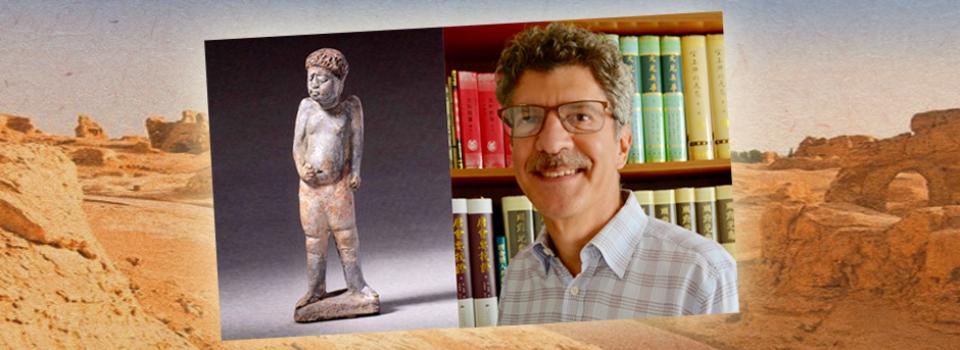联系我们
邮箱:shanghai.cga@nyu.edu
电话:+86 (21) 20595043
微信公众号:NYUShanghaiCGA
地址:
上海市浦东新区杨思西路567号
W822室

© 2024 All Rights Reserved

The world’s most famous trade route did not only witness the transfer of silks, spice, and various other commodities, but also humans. Who were the slaves traded along the ancient route? Who were the traders? Where did they come from? Professor Jonathan Skaff from Shippensburg University of Pennsylvania offered answers during a lecture about Silk Road Slave Trade at Turfan during the Tang Dynasty on October 17th. The event was sponsored by NYU Shanghai’s Center for Global Asia.
As he led his NYU Shanghai audience to rediscover the Silk Road from a new angle, Prof. Skaff digged through the history of the Eurasian slave trade between West and East Asia during the 7th and 9th centuries CE. He focused his analysis on the Turfan oasis in the Central Asian Turfan Basin and argued that its arid climate and irrigated agriculture contributed to the trade.
“Central Asian merchants and the elite class in Tang Dynasty were found buying, selling and traveling with human chattels,” asserted Prof. Skaff.
Purchase contracts of slaves written on paper have come to light in several tombs in the Turfan region. Recycled as hats and shoes, the documents were buried along with the corpses and other grave goods. The standard information recorded in such contracts comprised the gender and places of origins of the slaves as well as the names of their sellers and buyers.
In his talk, Prof. Skaff introduced the results of his analysis of the contracts. One of his conclusions was, for example, that Sogdians were most active in the slave trade. He also showed that 80 percent of the caravans dealt with slaves, who accounted for up to 38.5 percent of all travellers.
“The Tang Empire exerted enormous influence on the economics of slave trade. The legal, military, administrative and transportation systems of the Tang Empire facilitated human trafficking by guaranteeing road transportation and enforcing the contracts,” Skaff said, adding that there was no age limit for slaves and most of them were kids from poor families.
The talk was hosted by Interim Director for the Center for Global Asia, Assistant Professor Armin Selbitschka. It was the latest installment in a regular lecture series that is sponsored by the Center of Global Asia and has featured a number of distinguished scholars including Wang Gungwu, Amitav Ghosh, and Prasenjit Duara in the past.
致来访者:
• 须预约报名
• 须在学校入口处出示身份证
• 学校不提供停车服务
• 请从世纪大道1555号的南门入口处进入学校
• Taxi card
• 地铁:乘坐2/4/6/9号线,到世纪大道站下车,从6号出口出站
• 公交:乘坐169/987路公车,到世纪大道浦电路站下车
邮箱:shanghai.cga@nyu.edu
电话:+86 (21) 20595043
微信公众号:NYUShanghaiCGA
地址:
上海市浦东新区杨思西路567号
W822室

© 2024 All Rights Reserved